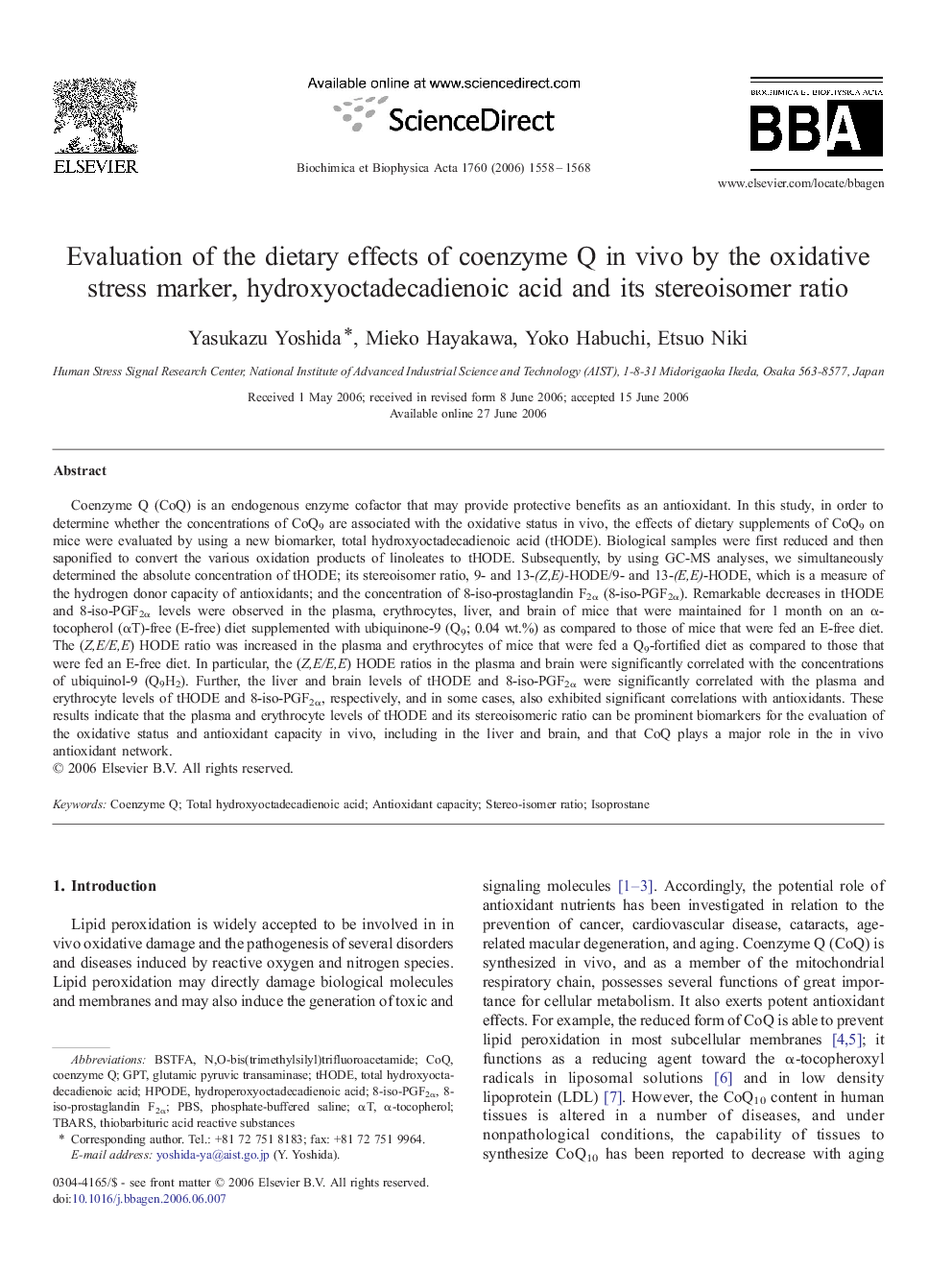| Article ID | Journal | Published Year | Pages | File Type |
|---|---|---|---|---|
| 1948868 | Biochimica et Biophysica Acta (BBA) - General Subjects | 2006 | 11 Pages |
Coenzyme Q (CoQ) is an endogenous enzyme cofactor that may provide protective benefits as an antioxidant. In this study, in order to determine whether the concentrations of CoQ9 are associated with the oxidative status in vivo, the effects of dietary supplements of CoQ9 on mice were evaluated by using a new biomarker, total hydroxyoctadecadienoic acid (tHODE). Biological samples were first reduced and then saponified to convert the various oxidation products of linoleates to tHODE. Subsequently, by using GC-MS analyses, we simultaneously determined the absolute concentration of tHODE; its stereoisomer ratio, 9- and 13-(Z,E)-HODE/9- and 13-(E,E)-HODE, which is a measure of the hydrogen donor capacity of antioxidants; and the concentration of 8-iso-prostaglandin F2α (8-iso-PGF2α). Remarkable decreases in tHODE and 8-iso-PGF2α levels were observed in the plasma, erythrocytes, liver, and brain of mice that were maintained for 1 month on an α-tocopherol (αT)-free (E-free) diet supplemented with ubiquinone-9 (Q9; 0.04 wt.%) as compared to those of mice that were fed an E-free diet. The (Z,E/E,E) HODE ratio was increased in the plasma and erythrocytes of mice that were fed a Q9-fortified diet as compared to those that were fed an E-free diet. In particular, the (Z,E/E,E) HODE ratios in the plasma and brain were significantly correlated with the concentrations of ubiquinol-9 (Q9H2). Further, the liver and brain levels of tHODE and 8-iso-PGF2α were significantly correlated with the plasma and erythrocyte levels of tHODE and 8-iso-PGF2α, respectively, and in some cases, also exhibited significant correlations with antioxidants. These results indicate that the plasma and erythrocyte levels of tHODE and its stereoisomeric ratio can be prominent biomarkers for the evaluation of the oxidative status and antioxidant capacity in vivo, including in the liver and brain, and that CoQ plays a major role in the in vivo antioxidant network.
